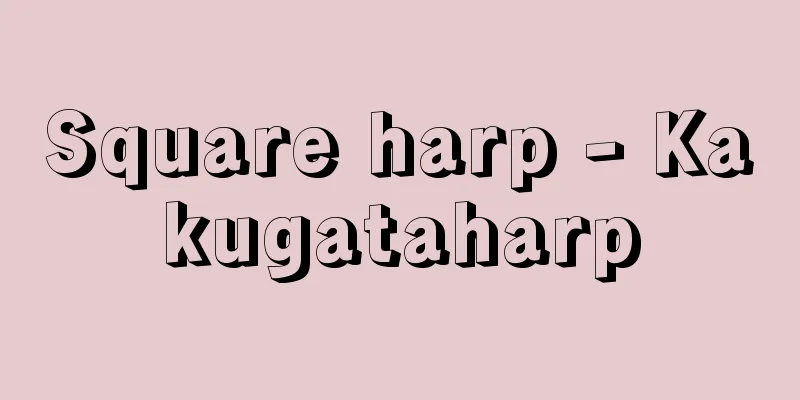Endorsement - Uragaki

|
A method of transfer specific to bills, checks, bills of lading, and warehouse receipts, in which the holder of the right on the security (endorser) writes the necessary information on the security, signs it, and delivers it to the other party (endorsed party). Usually, it refers to a transfer endorsement, which is intended to transfer the rights on the security, but in a broader sense, it also includes a commission of collection endorsement, which is made with the intention of collecting the rights on the security held by the endorser, such as a bill receivable, and a pawn endorsement, which is made with the intention of establishing a pledge on the security as security for a debt. In addition, there are special endorsements, such as a return endorsement and a post-due endorsement, in the case of a transfer endorsement. A return endorsement is an endorsement made to the debtor on the security, such as the acceptor, issuer, endorser, or guarantor of the bill, as the endorsee. Normally, when a back endorsement is made, the rights and obligations on the security belong to the same person, and the claim should be extinguished by confusion (Civil Code Article 520), but in the case of bills, the parties are not in a relationship of substantial conflict of interest, and due to the nature of bills being circulated from time to time, the holder's status is not unique, so the possibility of a back endorsement is recognized, and a person who acquires a bill through this can further endorse and transfer it (Bills of Negotiable Instruments Law Article 11, Paragraph 3). A post-due endorsement is an endorsement made after the bill has been refused payment or has matured, and since the bill has lost its function as a negotiable instrument, it does not need to be circulated normally, so this endorsement is only recognized as having the effect of a normal named claim assignment, and is not recognized as having a security effect or severing personal defense (Bills of Negotiable Instruments Law Article 20, Paragraph 1). [Toda Shuzo] Endorsement MethodIt is called an endorsement because it is usually made on the back of the security, but legally it does not necessarily have to be on the back and can be made on the front, a certified copy, or an addendum to either. However, if an endorsement is made only with the endorser's signature, it must be on the back. There are two types of endorsement: named endorsement and blank endorsement. The former is made by the endorser specifying the person to be endorsed and signing it, while the latter is an endorsement that does not specify the person to be endorsed, and can be either where the endorser writes out the endorsement text and signs it, or where it is simply where the endorser signs it. In addition, there is also a type of endorsement called bearer endorsement, which states that payment should be made to the bearer of the security, and this is recognized as having the same effect as a blank endorsement (Bills of Exchange Act, Articles 11-20, Cheque Act, Articles 14-24, etc.). [Toda Shuzo] Effect of endorsementThe effects of an endorsement are as follows: (1) Effect of transfer of rights By an endorsement, all rights on the security are transferred from the endorser to the endorsee. This effect is stronger in the case of bills and checks than in the case of general assignment of claims, and the severance of personal defenses that the debtor has against the endorser cannot be asserted against the endorsee with defenses based on personal relationships that the debtor has with the endorser (Bills and Notes Act, Article 17; Cheques Act, Article 22). (2) Security effect An endorser bears a security liability to all the latter parties, including the endorsee, in the event that the obligation under the security is not fulfilled. This is a system recognized to ensure the liquidity of securities, and generally, the more endorsements there are, the stronger the credibility of the security (Article 15, Paragraph 1 of the Bills of Exchange Act, Article 18 of the Cheques Act). Since endorsements are recognized to have such effects, there are cases in which endorsements are prohibited in order to avoid this. The so-called non-endorsable bills (cheques) are one such example, and are used to issue bills and checks for the purpose of security and to prevent them from being circulated elsewhere. In this case, transfer by endorsement is not possible, but transfer is possible with the method and effect of a named claim transfer. In addition, there are unsecured endorsements and non-endorsable endorsements. An unsecured endorsement is an endorsement made by the endorser stating that he/she will not bear a security liability to all the latter parties when making the endorsement. A non-endorsement is made by a person who makes an endorsement by stating that he/she is prohibited from making any new endorsements, but in this case, unlike a non-endorsement made by the issuer, it only has the effect of exempting the endorser from the liability for warranty to the latter party of the endorsee, but the endorser is liable for warranty to the direct endorsee. It never literally has the effect of prohibiting endorsement. (3) Effect of qualification A holder of a security with a series of endorsements is presumed to be the true owner of the rights on the security when exercising the rights. If a security holder had to prove his/her actual rights every time he/she exercised the rights, he/she would have to investigate the matter every time he/she acquired the security, and the security would not be able to be rapidly transferred. Therefore, a holder of a security with a series of endorsements is recognized as a formal owner, making it easier for him/her to exercise the rights (Bills and Notes Act, Article 16, Paragraph 1, and Cheques Act, Article 19). [Toda Shuzo] Continuation and deletion of endorsementsIn the description of a security, the recipient becomes the endorser of the first endorsement, the endorsee of the first endorsement becomes the endorser of the second endorsement, and so on, until the current holder, and so on, a succession of endorsements is called a succession of endorsements. For example, if the order is A → B, B → C, C → D, a succession of endorsements is recognized, but if the order is A → B, C → D, a succession of endorsements is not recognized. If the last endorsement is blank, the holder of the security is presumed to be the rightful owner, and if there is another endorsement on the blank endorsement, the person who made that endorsement is presumed to have acquired the security by the blank endorsement, so the succession of endorsements is not missing. Also, an endorsement that has been cancelled is presumed to have no description of the succession of endorsements. The existence or non-existence of a succession of endorsements should be judged formally from the description on the security, and even if it is the same person, if it is difficult to recognize the same person from the indication, a succession of endorsements is not recognized. A holder of a security with a series of endorsements is presumed to be a legitimate owner, and does not need to prove his/her actual rights when exercising his/her rights, and a bona fide debtor who performs an obligation on this person is exempt from liability, even if he/she is not a true owner, unless he/she acts in bad faith or with gross negligence (Bills and Notes Act, Article 40, Paragraph 3). In addition, a system of bona fide acquisition is recognized, in which a person who acquires a security with a series of endorsements from a non-holder in good faith and without gross negligence is not obligated to return it (Bills and Notes Act, Article 16, Paragraph 2; Cheque Act, Article 21). Needless to say, even if there is no series of endorsements, a holder of a security can exercise his/her rights if he/she proves his/her actual rights. [Toda Shuzo] [Reference item] | | |Source: Shogakukan Encyclopedia Nipponica About Encyclopedia Nipponica Information | Legend |
|
手形、小切手、貨物引換証、倉庫証券のような指図(さしず)証券に特有な譲渡方法で、証券上の権利者(裏書人)がその証券に所要事項を記載して署名し、これを相手方(被裏書人)に交付してなされる証券行為をいう。通常は証券上の権利の譲渡を目的とする譲渡裏書をさすが、広義では、裏書人の有する証券上の権利、たとえば手形債権を取り立てるため、その旨を付記してなされる取立委任裏書や、債務の担保として証券に質権(しちけん)設定の趣旨を付記してなされる質入裏書を含む。なお、譲渡裏書の場合ではあるが、特殊な裏書として戻(もどし)裏書と期限後裏書がある。戻裏書とは、証券上の債務者、たとえば手形の引受人、振出人、裏書人、保証人等に対し、これらを被裏書人としてなされる裏書である。本来、戻裏書がなされると証券上の権利と義務が同一人に帰属し、混同により債権が消滅するはずであるが(民法520条)、手形の場合、当事者は相互に実質的に利害が対立する関係ではなく、転々流通する手形の性質上、所持人としての地位に個性がないところから、戻裏書の可能性を認め、それによって手形を取得した者はさらに裏書譲渡ができるものとしている(手形法11条3項)。期限後裏書とは、支払拒絶または満期後になされた裏書で、手形の流通証券としての機能が失われているので、これも正常に流通させる必要がないため、この裏書には通常の指名債権譲渡の効力しか認めず、担保的効力も人的抗弁の切断も認められない(手形法20条1項)。 [戸田修三] 裏書の方式通常は証券の裏面になされるので裏書といわれているが、法律上はかならずしも裏面にする必要はなく、証券の表面、謄本またはそれらの補箋(ほせん)にもなしうる。ただ裏書人の署名のみによって裏書をする場合にはかならず裏面にしなければならない。裏書の方式には記名式裏書と白地(しらじ)式裏書とがある。前者は、被裏書人を指定して裏書人が署名してなされるものであり、後者は、被裏書人を指定しない裏書で、それには、裏書文句を記載して裏書人が署名する場合と、単に裏書人の署名だけでなされる場合とがある。このほか、証券の持参人に対して支払うべき旨を記載した持参人払式裏書の方式もあるが、これには白地式裏書と同一の効力が認められている(手形法11条~20条、小切手法14条~24条ほか)。 [戸田修三] 裏書の効力譲渡裏書の効力としては次のようなものがある。 (1)権利移転的効力 譲渡裏書により、証券上のいっさいの権利が裏書人から被裏書人に移転する。この効力は手形・小切手の場合にはとくに一般の債権譲渡の場合よりも強力で、債務者が裏書人に対してもっている人的関係に基づく抗弁事由をもって被裏書人に対抗できないという人的抗弁の切断が認められている(手形法17条、小切手法22条)。 (2)担保的効力 裏書人は、証券上の債務の履行がなされない場合に、被裏書人などの後者全員に対し担保責任を負っている。これは証券の流通性を確保するために認められた制度であり、一般に裏書が多いほどその証券の信用性が強化される(手形法15条1項、小切手法18条)。裏書にはこのような効力が認められているために、それを回避する意味で裏書を禁止する場合がある。いわゆる裏書禁止手形(小切手)はその一つであり、手形・小切手を担保の目的のために振り出し、ほかに流通せしめないために用いられる。この場合裏書による譲渡はできないが、指名債権譲渡の方式と効力をもって譲渡することはできる。そのほか、無担保裏書と裏書禁止裏書とがある。無担保裏書は、裏書人が裏書をなすにあたり、後者全員に対し担保責任を負担しない旨を記載してなされる裏書である。裏書禁止裏書は、裏書人が裏書をなすにあたり新たな裏書を禁ずる旨を記載してなされるものであるが、この場合は振出人のなす裏書禁止と異なり、単にその裏書人について被裏書人の後者に対する担保責任を免れるという効力を有するにとどまり、直接の被裏書人に対しては担保責任を負う。けっして文字どおり裏書禁止の効力を生ずるものではない。 (3)資格授与的効力 裏書の記載において、裏書の連続のある証券の所持人は、証券上の権利の行使につき、いちおう真の権利者であるとの推定を受ける。証券所持人が権利行使をする場合、つねに実質的な権利を証明しなければならないものとすると、証券を取得するにあたりいちいちその点の調査を必要とすることになり、証券の迅速な流通性を期しえない。そこで、裏書の連続ある証券所持人に権利者としての形式的資格を認め、権利行使を容易にしたのである(手形法16条1項、小切手法19条)。 [戸田修三] 裏書の連続・抹消証券の記載において、受取人が第一の裏書の裏書人となり、第一の裏書の被裏書人が第二の裏書の裏書人になるというようにして、現在の所持人に至るまで裏書が連続していることを裏書の連続という。たとえば、A→B、B→C、C→Dとなっていれば裏書の連続が認められるが、A→B、C→Dの場合は裏書の連続を欠く。最後の裏書が白地式のときは単なる証券の所持人が権利者であると推定され、また、白地式裏書について他の裏書があるときは、その裏書をなした者が白地式裏書によって証券を取得したものとみなされるから、裏書の連続を欠かないことになる。また、抹消された裏書は、裏書の連続については記載がないものとみなされる。裏書の連続の有無は、証券上の記載から形式的に判断すべきであって、かりに同一人であっても表示上同一人と認めがたい場合には裏書の連続を欠くことになる。裏書の連続のある証券所持人は正当な権利者としての推定を受けるから、権利行使に際し自己の実質的な権利を証明する必要がないし、また、この者に履行をした善意の債務者は、たとえその者が真の権利者でなかったとしても、悪意、重過失がない限り免責される(手形法40条3項)。このほか、裏書の連続ある証券を無権利者から善意かつ無重過失で取得した者は、これを返還する義務を負わないという、善意取得の制度が認められている(手形法16条2項、小切手法21条)。なお、裏書の連続を欠いていても、証券所持人は自己の実質的な権利関係を立証すれば、その権利を行使できることはいうまでもない。 [戸田修三] [参照項目] | | |出典 小学館 日本大百科全書(ニッポニカ)日本大百科全書(ニッポニカ)について 情報 | 凡例 |
>>: Ura Kaisen (Ura Kaisen) - Ura Kaisen
Recommend
Rank system - Kaisei
...When people or similar subjects are organized ...
Sulzer, S.
The Jewish communities of the Orient (Yemen, Iraq...
Kakinomoto no Hitomaro - Kakinomoto no Hitomaro
Dates of birth and death unknown. A representativ...
kadenz
…Figure 4 shows an outline of chord progressions ...
Akiko Kanda
...To achieve this, it was necessary to develop n...
Kameba Hikiokoshi - Kameba Hikiokoshi
A perennial plant of the Lamiaceae family (APG cl...
Yukufukai - Yukufukai
A foundation established in January 1925 within th...
Pitcairn [island] - Pitcairn
A volcanic island located southeast of the Tuamotu...
Sino-Tibetan
A large language family that is distributed over a...
Kanegasaki
… [Keiji Ueda] [The Legend of the Sunken Bell] Th...
Hironori Mizuno
Naval officer and military commentator. Born in E...
Hyperbulia
... Examples include pyromania and kleptomania. &...
Coal storage - Chotan
〘 noun 〙 The act of storing coal or charcoal. Also...
Cotransport
…The transport system of sugars and amino acids i...
Crow's Sesame - Crow's Sesame
An annual plant of the Tilia family found in sunny...









